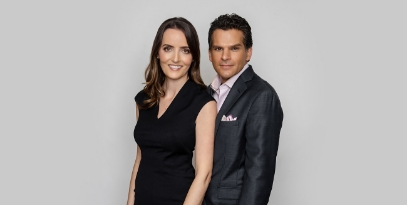Quick Links
What is Liposuction?
Liposuction slims and reshapes specific areas of the body by removing excess fat to improve the overall body proportions and contours. This procedure can treat many areas of the body, some of the most popular being the abdomen and waist, hips and buttocks, thighs, upper arms, cheeks, chin, and neck.
However, it is important to understand that liposuction is not a treatment for weight loss or obesity, and should not be a substitute for a healthy diet and regular exercise. It is also not a treatment for loose, saggy skin or cellulite.

Who is a good candidate for Liposuction?
Individuals who have excess fat deposits on their body that will not go away with diet or exercise, who feel like certain areas of their body are out of proportion with the rest of their figure, who have good skin elasticity, and who are at or near their desired body weight can often benefit from liposuction. The best way to determine if this procedure is right for you is through a consultation appointment with one of our plastic surgeons. Contact our Tucson office today to get started!
Before + After
Patient Results
Achieve your ideal body with body contouring, fat reduction, and rejuvenation. We offer procedures for every area of the body, including the stomach, thighs, arms, back, and more! View our patient gallery and find a before and after similar to your body type and treatment goals to see what kind of results you can expect from our team.
BEFORE & AFTER GALLERYLiposuction Surgery
During the liposuction procedure, small incisions will be created near the treatment area. Then, a thin tube called a cannula will be inserted through these incisions to loosen excess fat deposits. Then, the fat will be suctioned out.
There are a variety of different liposuction techniques that can be used to eliminate excess fat from the body. The technique that is right for you will depend on your individual case and your plastic surgeon’s suggestion. These liposuction techniques include:
Tumescent Liposuction
First, your plastic surgeon will inject an anesthetic solution into the treatment area, which will minimize bleeding and discomfort during the procedure.
Ultrasound Assisted Liposuction
This technique uses ultrasound energy to help break apart fatty tissue and loosen it from the body, which makes it easier to remove larger amounts of fat.
Laser Assisted Liposuction
Uses laser energy to help loosen fat cells. Different brand names may include SmartLipo and Slimlipo.
Suction Assisted Liposuction
Uses a vacuum-like device to assist in removing the fat.
Recovery Process
Liposuction Recovery
 *4-6 Weeks
*4-6 Weeks
Following liposuction, a special compression garment may cover treatment areas to help control swelling during recovery. Drains may also be placed to collect any excess blood or fluid. Some patients may be able to return to work after a few days, depending on the type of job and the extent of the procedure. Your plastic surgeon will provide you with specific instructions on how to properly care for your surgical sites to ensure that you experience a safe recovery.
Because fat cells are removed from the body during liposuction, these fat cells will not grow back. However, it is important that you maintain a stable weight to ensure that your results are not compromised.
Frequently Asked Questions
Are you put to sleep for liposuction?
Can I get liposuction if I am overweight?
Can visceral fat be removed?
Does a tummy tuck remove fat?
Does fat come back after lipo?
Does liposuction get rid of cellulite?
Does liposuction really work?
How can I avoid weight gain after surgery?
How can I lose tummy fat fast?
How can I reduce my stomach fat?
How dangerous is liposuction?
How do I prepare for liposuction?
How do you shower after liposuction?
How does fat transfer work?
How does Lipo work?
How long do you drain after lipo?
How long do you need off work after liposuction?
How much does it cost to get liposuction on your stomach?
How much does liposuction cost without insurance?
How much fat can lipo remove?
How painful is liposuction recovery?
Is it easier to lose weight after liposuction?
Is Lipo permanent?
Is liposuction an outpatient procedure?
Is there a weight requirement for liposuction?
What can you eat after lipo surgery?
What do they do with liposuction fat?
What is AirSculpt Lipo?
What is Lipo Laser?
What is the best type of liposuction?
What is ultrasonic liposuction?
What types of liposuction are there?
Who is good candidate for liposuction?
How painful is liposuction for men?
What is the recovery time for male liposuction?
Is liposuction worth it for a man?
What body part is most painful to liposuction?

Silvia Kurtovic, MD & Raman Mahabir, MD
Board Certified Plastic Surgeons
At Tucson Plastic Surgery, we have a patient-centric approach that sets us apart from the rest. We take the time to really get to know you and your aesthetic goals during one-on-one conversations which help us to fully understand your motivations.






